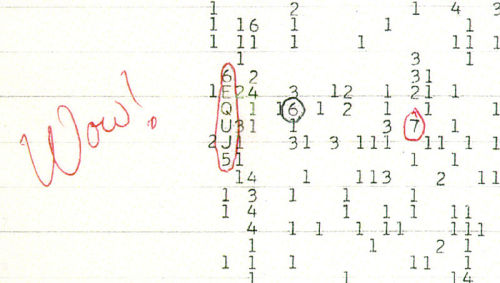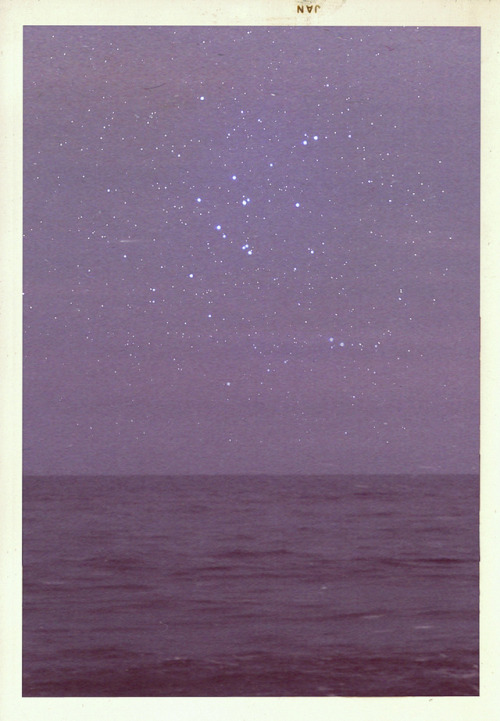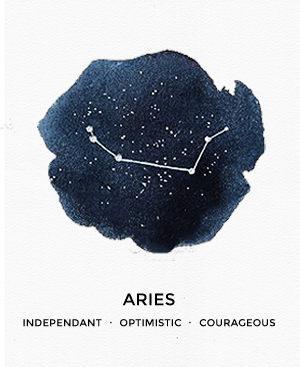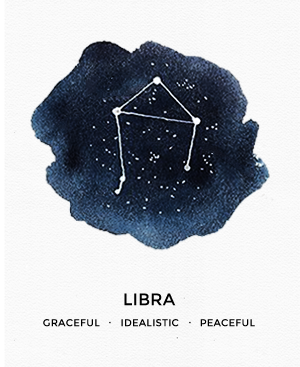Piscesconstellation - ☽✪☾

More Posts from Piscesconstellation and Others




The Constellations of Summer, Francesco Levy
🌑 Born beneath a New Moon -The Sun and the Moon occupy the same sign Moon is very close to the Sun, almost touching it at a distance of 0-44° ahead (ie. Sun in Cancer with Moon in Cancer, or Sun in Leo with Moon in Leo). These people are internally heated with hot emotion and intuition. There is also an impending sense of excitement and stimulation for change that can manifest as panic or inability to rest
🌒 Born beneath a Waxing Crescent Moon - Moon is about 2-3 signs ahead of Sun) Sun sextile Moon
Moon is very close to the Sun forming a 45-60° sextile with the sign ahead (ie. Sun in Taurus sextile Moon in Cancer) Parents can have opposing values and conflicting personalities that create a sense of instability resulting in the inability to settle as an adult, they can therefore attract partners where unresolved issues are projected and the individual can be intensely irritated or unnerved by minor personality differences
🌓 Born beneath a Waxing Half Moon -Moon is about 3-4 signs ahead of the Sun. Sun square Moon or Sun trine Moon
The Sun forms a 90° square with the Moon sign ahead that is typically the same modality (Cardinal, Fixed or Mutable)…(ie. Sun in Libra (cardinal) square Moon in Capricorn (cardinal) or The Sun forms a 180° trine with the Moon sign ahead that is typically the same element (Fire, Earth, Air, Water)…(ie. Sun in Pisces trine Moon in Cancer) Attracted to partners that display opposing values and behaviours, but also requires somebody to approach life at the same speed. Dane Rudhyar called the first and Last Quarter Moons “crisis” times.
🌔 Born beneath a Waxing Gibbous Moon -Moon is about 5 signs ahead of the Sun. No major aspect between the Sun and the Moon, or a 150° Sun inconjunct Moon
Moon is 150° ahead of the Sun forming a 150° inconjunct (Sun in Aquarius and Moon in Taurus) Often troubled by childhood and the relationship between parents. self development attached to relationships. Philippe Cornu writes, “This is a day for wisdom. This is a day of speed, clarity, skill and intelligence. Skillful actions are successful.”
🌕 Born beneath a Full Moon (Moon 180° ahead of Sun, 6 signs away)
The Sun and Moon are in dual signs, sitting opposite one another on the birth chart and typically share the same modality (ie. Sun in Aries (cardinal) and Moon in Libra (cardinal). The individual’s parents can be conflicting and troubled, chaos and instability may have been conditioned as normality, it can be difficult for the person to integrate that the parent was both good and bad. "Lunar gaps” is, what astrologer Michael Erlewine calls them, “regular opportunities, joints in the nick of time, when insights are somehow more possible than at other times.”
🌖 Born beneath Disseminating Moon (Moon is about 5 signs behind the Sun, Moon inconjunct Sun, or Moon trine Sun)
The Sun is 135° behind the Moon sign forming a 150° inconjunct (Sun in Sagittarius and Moon in Cancer) or trine (Sun in Aries and Moon in Sagittarius) The feeling of being born with the responsibility of making important, long term decisions they often feel unready for. Is adaptable and makes the internal adjustment necessary to change with life. Dane Rudhyar writes, “The waning period of the lunation is thus a period of growth for the active power of consciousness. Consciousness, once it is formulated, can be shared with others, and thus can actively affect and transform others.”
🌗 Born beneath a Waning Half Moon (Moon is about 3-4 signs behind the Sun. Sun square Moon or Sun sextile Moon)
Moon is very close to the sun, almost basking in its shadow. Moon is 90° behind the Sun forming a square (Sun in Taurus and Moon in Aquarius) or 60° away forming a sextile (Sun in Cancer and Moon in Taurus) Realiser and materialiser of magic, truthful expression of emotion can seem to create incessant conflict. Can be in a constant crisis until inner balance is obtained. Inner tension becomes explosive without productive outlets. Haydn Paul writes of this phase, “This personality type often feels a secret destiny
🌘 Born beneath Balsamic Moon (Moon is 45° behind the Sun, only 1 or 2 signs away) Moon semisquare Sun (ie Sun in Pisces and Moon in Taurus) The Moon disperses the karma for this lifetime. Often regarded as ‘special’ from others from a young age as they displayed much solitary wisdom and willingness to be alone. These people are early rises and may be unaffected by every moon phase but the balsamic (dead moon). May feel abandoned and without a mother
🌙 People born on the cusp (between 3 degrees°) of Moon Signs The Moon is considered void of course during the last major planetary aspect in and entrance into the next sign. Asks the questions they already know the answer to. Can have a habit of trusting the wrong people or keep enemies closer than friends
Easiest way to understand the purpose each part of a chart serves, since I see often that people get confused once they start piecing everything together, here’s how it all connects;
Planets = Dimension of experience/life
Signs = Qualities of experience/life
Houses = Field of experience/life
Aspects = Integration between experiences

“There is a philosophy, that the world we perceive through our senses, is only a version of a deeper reality. The Greek philosophers Socrates and Plato, taught that the world of our senses is a distortion, a mirage… like a shadow playing across a wall. Many historians believe that the Greeks were influenced by spiritual thinkers from India, where the idea of a deeper reality has a very long history. In Sanskrit, the word "maya” refers to this illusion and the selective view of reality we perceive through our senses. Beyond our manifest physical universe, there is a field of energy, information, and intelligence that orchestrates and governs the material environment. This ground state of creation is called the conscious energy field.
The conscious energy field does not exist independently of our perception of it. In other words, reality is a two-way street. We are both transmitters and receivers of information. We are both the creation and the creators of the conscious energy field, and are participants in a consciousness-created universe. This doesn’t mean that there’s no external reality, or that the universe literally takes place inside our heads. What it means is that the physical universe has no qualities or attributes in the absence of a conscious observer. For example, we see color as an attribute of physical reality. But color is not really inherent to reality. Instead, the phenomenon of color is a response made by the human nervous system to stimuli from the environment. We experience color as if it’s happening outside us, but we’re actually projecting it from inside us, and creating the phenomenon of color in the conscious energy field. This knowledge, combined with the power of intent, can allow you to create other phenomena in your life. By simply intending to create something, you have now begun to nurture that result in the physical world.“ -Deepak Chopra / Artwork by @tropicalgloom
a list of [just a few] different types of astrology
Astrocartography – The astrology of place. It examines how people respond to the various energies available to them across the globe. Astrologers that practice this type of astrology help others find spots where they can better engage with specific themes in their lives by examining a special type of astrological map.
Chinese Astrology – A group of traditions that arose independent of those in the west with their own mythos, techniques, and philosophy that bloomed throughout the long history of Chinese cultures.
Cosmobiology – A school of astrology credited with popularization by German astrologer Reinhold Ebertin that is related to the Hamburg School of Astrology. There is a primary emphasis on mid-points and 8th Harmonic aspects, and the significant expansion of medical astrological principals.
Egyptian Astrology – A retrospective school of astrology that uses the rich Egyptian mythos to examine Zodiacal relationships. This should not be confused with the type of astrology practiced in ancient Egypt from roughly 2000BC-100BC that served as a foundational precursor to the Hellenistic tradition, since the concept of the Zodiac was developed elsewhere.
Electional Astrology – Also known as Inceptional Astrology, this branch of the tradition is focused on finding the best time to start new projects so that they meet with the greatest success and abundance.
Esoteric Astrology – The types of astrology that examine spiritual principals and seek to build corpus knowledge of esoteric ideologies by examining the mundane motion of the planets and stars as well as their hidden relationships.
Evolutionary Astrology – Astrology that focuses on the supposed evolutionary path of the soul. It is used to foster individual growth and spiritual expansion in accordance with many new age principals.
Financial Astrology – Astrology that examines financial markets and their timing according to transits in order to forecast market changes. This branch of astrology also examines natal potential for money making, as well as uses astrology as a tool for discourse about global economic trends.
Hellenistic Astrology – The type of astrology practiced in the Mediterranean from roughly 100BC to 600BC that reached its height during the Roman Empire. It is the first western system to incorporate the 4 fold system of astrology that became the foundation of all later practices.
Horary Astrology – Divinatory astrology that examines the moment in which a question is understood by an astrologer in order to find an answer for the querent.
Jyotish – Commonly conflated with Vedic Astrology, Jyotish is the main form of astrology practiced in the Indian subcontinent in the modern era. It represents a hybrid of indigenous Indian astrology with Hellenistic techniques. This type of astrology is sidereal, or constellation based.
Magi Astrology – A secretive form of astrology that examines relationships and their timing according to a different set of astrological standards.
Mayan Astrology – The tradition of astrology practiced in the Mayan culture that arose independently of western influence and ideology.
Medical Astrology – Astrology that examines the relationship of the human body with the alignment of the cosmos. Used to forecast and diagnose predispositions to certain health issues, as well as provide recommendations for greater over all health and wellness according to the natal potential.
Modern Astrology – The various forms of astrology that have been practiced since its revival in the late 1800’s. There has been a marked increase in the importance placed on the Sun sign, and a focus on the psychological potentials indicated by the natal chart.
Mundane Astrology – The astrology of large groups of people and their interactions. Transits are examined in order to explain and forecast global trends and events.
Natal Astrology – Astrology centered on the natal chart of individuals. In the modern era this is the most widely used form of astrology.
Psychological Astrology – The examination of the natal chart as a set of psychological predispositions. Based on this foundational premise the astrologer can help guide and counsel the native with traditional psychological techniques.
Rectification – An extraordinarily advanced astrological technique that examines the events of a native’s life and works backward in order to produce a time of birth for those that do not possess it. A time consuming and expensive process that is a necessary precursor for all advanced forms of astrological work.
Relocational Astrology – The supposition that natal capabilities are amenable to the influences of locality. Examines the shift of potential that a native faces when living in different areas.
Synastry – The astrology of relationships. Two charts are examined concurrently in order to reveal themes and potentials that may be present as the relationship progresses.
Traditional Astrology – The various forms and traditions of astrology that were practiced during the almost 3000 years of its history prior to astrology’s revival in the late 1800’s. There is a marked focus on mundane astrology and examining the lives of natives from a deterministic standpoint.
Transit Astrology – The examination of the current or future positions of the planets in relation to a natal chart order to see the themes that are currently active in a native’s life, as well as forecast future trends and events.
Uranian Astrology – Another branch that is related to the Hamburg School of Astrology that focuses on midpoints and uses theoretical planets as part of it’s arsenal of techniques. It is sometimes said to be the true successor of the Hamburg legacy.
Vedic Astrology – The indigenous forms of astrology of the Indian subcontinent that arose independent of those of the west. There is a distinct lunar focus (as there are with many of the oldest forms of astrology). This system was eventually merged with ancient Hellenistic techniques in order to form what is now known as Jyotish.
Vocational Astrology – A specialized form of astrology that examines the inherent potential within a natal chart in order to recommend potential career paths for a native and help them navigate their professional life.
Weather Forecasting Astrology – The type of astrology that is most popularly used in almanacs. More advanced techniques and philosophies in use by astrologers range from every day forecasting to major climate prediction.










Constellations & Zodiac Signs ★彡
the highest intelligence is empathy

Conjunction of Mars and Saturn
-
 love-is-pain-by-bri liked this · 1 week ago
love-is-pain-by-bri liked this · 1 week ago -
 servungcint reblogged this · 1 month ago
servungcint reblogged this · 1 month ago -
 ohhoneyhoneyy reblogged this · 2 months ago
ohhoneyhoneyy reblogged this · 2 months ago -
 faeline liked this · 2 months ago
faeline liked this · 2 months ago -
 suppuration reblogged this · 5 months ago
suppuration reblogged this · 5 months ago -
 catsinspacesuits liked this · 5 months ago
catsinspacesuits liked this · 5 months ago -
 layziethelapras liked this · 5 months ago
layziethelapras liked this · 5 months ago -
 flairina reblogged this · 5 months ago
flairina reblogged this · 5 months ago -
 wretchie liked this · 6 months ago
wretchie liked this · 6 months ago -
 artoklasia reblogged this · 6 months ago
artoklasia reblogged this · 6 months ago -
 itsgonnabeasparklingday liked this · 8 months ago
itsgonnabeasparklingday liked this · 8 months ago -
 all-the-beautiful-chaos liked this · 9 months ago
all-the-beautiful-chaos liked this · 9 months ago -
 thepillarsofmarsandvenus liked this · 9 months ago
thepillarsofmarsandvenus liked this · 9 months ago -
 exaltedrevenge liked this · 9 months ago
exaltedrevenge liked this · 9 months ago -
 parttimepunner reblogged this · 9 months ago
parttimepunner reblogged this · 9 months ago -
 parttimepunner liked this · 9 months ago
parttimepunner liked this · 9 months ago -
 moss-sauce liked this · 10 months ago
moss-sauce liked this · 10 months ago -
 alwaysacurious1 liked this · 11 months ago
alwaysacurious1 liked this · 11 months ago -
 alice-quinn-at-oxford reblogged this · 11 months ago
alice-quinn-at-oxford reblogged this · 11 months ago -
 muigi1 liked this · 11 months ago
muigi1 liked this · 11 months ago -
 rabbitheads liked this · 1 year ago
rabbitheads liked this · 1 year ago -
 meissama liked this · 1 year ago
meissama liked this · 1 year ago -
 warcotuj8746 liked this · 1 year ago
warcotuj8746 liked this · 1 year ago -
 depressedgaylaughter reblogged this · 1 year ago
depressedgaylaughter reblogged this · 1 year ago -
 chaotically-gay reblogged this · 1 year ago
chaotically-gay reblogged this · 1 year ago -
 derecho-noah reblogged this · 1 year ago
derecho-noah reblogged this · 1 year ago -
 cherryboness liked this · 1 year ago
cherryboness liked this · 1 year ago -
 blueeyedjoy reblogged this · 1 year ago
blueeyedjoy reblogged this · 1 year ago -
 bluefrost-freewolf liked this · 1 year ago
bluefrost-freewolf liked this · 1 year ago -
 sythesizeher reblogged this · 1 year ago
sythesizeher reblogged this · 1 year ago -
 sythesizeher liked this · 1 year ago
sythesizeher liked this · 1 year ago -
 internetfriendsforever reblogged this · 1 year ago
internetfriendsforever reblogged this · 1 year ago -
 internetfriendsforever liked this · 1 year ago
internetfriendsforever liked this · 1 year ago -
 lostbetweenthenotes reblogged this · 1 year ago
lostbetweenthenotes reblogged this · 1 year ago -
 whatthelaughman reblogged this · 1 year ago
whatthelaughman reblogged this · 1 year ago -
 angelictroublemaker liked this · 1 year ago
angelictroublemaker liked this · 1 year ago -
 redredredcake liked this · 1 year ago
redredredcake liked this · 1 year ago -
 janokenmun reblogged this · 1 year ago
janokenmun reblogged this · 1 year ago -
 confused-and-slightly-disturbed liked this · 1 year ago
confused-and-slightly-disturbed liked this · 1 year ago -
 janokenmun liked this · 1 year ago
janokenmun liked this · 1 year ago -
 annalies liked this · 1 year ago
annalies liked this · 1 year ago
